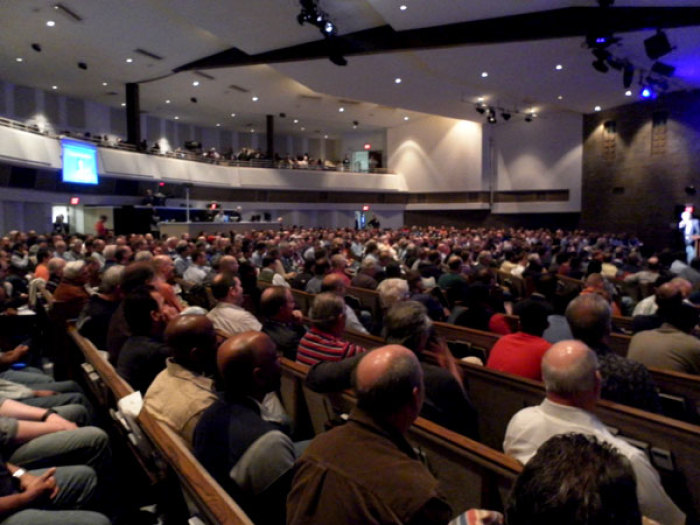Six reasons the multi-venue church model will experience rapid growth

The trends are fascinating.
About 50 years ago, many congregations in the United States began adopting the “multi” model. This first phase of the multi-model was primarily multiple worship services on Sunday morning. To be certain, it was controversial. You heard cries of, “We’ve never done it that way before” and “You will not be able to know other people in the church.”
The controversies quieted for the most part. Then the multi-site model began to gain momentum about two decades ago. Again, similar objections were raised. I was an early adopter of this model as a pastor in 1995, and I experienced firsthand the challenges of leading such a congregation to start a second site for our church.
The multi-venue model is not new, but it is gaining momentum. I define multi-venue as worship gatherings at the same site beyond the Sunday morning services or beyond the same worship center or sanctuary. For example, a church may start a service for college students on Tuesday evening. Or it may have a Korean service meeting in another part of the church facilities concurrent with an English-speaking service.
Though the model is not new, there seems to be a perfect storm accelerating the growth of the multi-venue approach. Here are six components moving the model forward.
- Multiplication is a proven model. The New Testament is clear about multiplication. The purpose of Paul’s missionary journeys was to take the gospel and to start, or multiply churches. We have seen the efficacy of the multiplication model in groups, Sunday school classes, ministries, church plants, and new church sites.
- Church leaders realize more than ever how underutilized their church facilities are. As a consequence, these leaders are looking at opportunities to start new services, for example, in times and places they did not consider in earlier years. I worked with one church that welcomed a Chinese congregation on Sunday afternoons and utilized its fellowship hall for a more contemporary service concurrent with other services on Sunday morning.
- Many churches do not have facilities. They often have to pay for expensive lease space. Or they have to move from school to school as they grow, or as the schools decide the church can no longer rent their facilities on Sunday. These churches would love to be in a place with a greater sense of security and permanence. They are often finding the perfect solution by sharing a facility with another church.
- Non-Sunday worship services will increase in number. Many church leaders are taking the leap and leading their congregations to offer at least one service other than Sunday morning. This move allows the church to reach more people without building or buying expensive facilities.
- Multi-venue is a great way to reach ethnic and language groups. These congregations are able to share facilities instead of the expensive path of owning or leasing multiple facilities.
- There will continue to be challenges for many churches that want to expand their facilities. Those challenges may come as a result of having insufficient acreage to build. Or they may be the result of a municipality or other approval authority denying a church permission to build. I have been involved in several legal consultations where the latter took place. Multi-venue services become a solution to this challenge as well.
For certain, multi-venue services are not new. They have been around for quite a while. But, for the reasons noted in this article, we will see a rapid expansion of this approach in the years ahead.
Let me hear your thoughts on this development.
Thom S. Rainer is the founder and CEO of Church Answers, an online community and resource for church leaders. Prior to founding Church Answers, Rainer served as president and CEO of LifeWay Christian Resources.




























